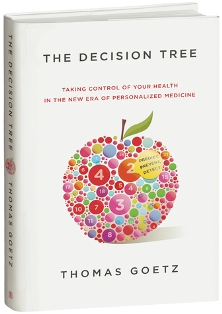September 17th, 2010 by DrWes in Better Health Network, Humor, News, Opinion
Tags: Doctor's Job, Doctor's Life, Doctors Are Humans, Doctors' White Coats, Dr. Sally Satel, Empathy, General Medicine, Humanistic Qualities of Medicine, Humanistic Side of Medicine, Humanizing Medicine, Humility As A Doctor, Life Lessons For Doctors, Medicine and Humanism, Real Life, Wall Street Journal, White Coat Ceremonies
No Comments »

An excellent opinion piece by Sally Satel, M.D., a psychiatrist, appeared in the Wall Street Journal this morning about white coat ceremonies as ways to reinforce the humanistic qualities of medicine. The best part, however, was this perspective:
But the question of whether empathy can be taught—and, in particular, whether a white-coat ceremony is a good means for promoting that virtue—is a matter of some debate.
Judah Goldberg, a young doctor at Chilton Memorial Hospital in New Jersey raises an intriguing paradox. He asks how the white coat can bring doctors closer to the subjective experience of patients when, as an icon of the profession, it is meant to isolate and distinguish them from the lay community.
“To the extent that empathy can be taught through a ritual,” Dr. Goldberg told me, “a hospital gown, the common garb of human frailty, would be more fitting than a distancing white coat.”
I must say, the thought of everyone seeing each others’ posterior sides as they paraded across the stage at such a ceremony did make me smile. Read more »
*This blog post was originally published at Dr. Wes*
September 16th, 2010 by Maria Gifford in Better Health Network, Health Tips, Interviews, News, True Stories
Tags: #txfm2010, Health and Technology, Maria Gifford, Mayo Clinic Transform 2010, Medicine and New Technology, Personalized Medicine, The Decision Tree, Thomas Goetz, Wired Magazine
No Comments »
 As an invited media guest at Mayo Clinic’s Transform 2010 symposium earlier this week, I had the pleasure of interviewing presenter Thomas Goetz, Executive Editor of Wired Magazine and author of the new book, The Decision Tree: Taking Control of Your Health in the New Era of Personalized Medicine.
As an invited media guest at Mayo Clinic’s Transform 2010 symposium earlier this week, I had the pleasure of interviewing presenter Thomas Goetz, Executive Editor of Wired Magazine and author of the new book, The Decision Tree: Taking Control of Your Health in the New Era of Personalized Medicine.
Thomas writes about science, health, and medicine and believes that engaging people in their health and involving them as participants and decision makers leads to improving their behavior and their health outcomes. He knows there’s a technology emergence of cheaper, better tools that have the ability to offer people a way “in” — from self-tracking gadgets to online disease communities and beyond. Thomas is intrigued by the confluence of ideas and technology that make it an opportune time in healthcare.
 The Decision Tree is based on the premise that our health doesn’t happen all at once, but that it’s a consequence of years of choices — some large, some small, some wise, some poor. A decision tree, therefore, is a “device” that can help make it more obvious that these decisions are something we are actually choosing — a way to externalize the choices that we otherwise make without much thought.
The Decision Tree is based on the premise that our health doesn’t happen all at once, but that it’s a consequence of years of choices — some large, some small, some wise, some poor. A decision tree, therefore, is a “device” that can help make it more obvious that these decisions are something we are actually choosing — a way to externalize the choices that we otherwise make without much thought.
Maria: As executive editor of Wired Magazine, what brought you to write a book about consumer health?
Thomas: I come from a family of healthcare providers — my father is a doctor, my mother is a nurse — so it’s always been a topic area I’ve been comfortable with. A few years ago I felt that I had more to add, and wanted to get more specific in my training, so I got my masters in public health at UC Berkeley. That led me to recognize all sorts of commonalities between the worlds of information technology and public health. At the same time, technologists in Silicon Valley and elsewhere have recognized that healthcare is one of the last industries untouched, in many senses, by the IT revolution. It’s happening now, very quickly, and I wanted to be among the first to not only cover the business, but to cover the way these companies and services will change and improve our lives. Read more »
September 16th, 2010 by Mark Crislip, M.D. in Better Health Network, Opinion, Research
Tags: Accuracy in Diagnosis, CDC Criteria, Centers For Disease Control and Prevention, CFS, Chronic Fatigue Syndrome, Disease Patterns, DNA, Good Diagnosticians, Molecular Biochemistry, Post-Infectious Disease, Psychiatry and Psychology, Science Based Medicine, Xenotropic Murine Leukemia Virus-Related Virus, XMRV
No Comments »

Humans love to find patterns in the world. Sometimes patterns exist, sometimes they are imaginary. Sometimes you can see a pattern that may be interesting and ignore its significance. As a resident I used to say that anyone who smokes three packs of cigarettes a day has to be schizophrenic. It was meant more as a joke when, in fact, it was later discovered that tobacco helps ameliorate the symptoms of schizophrenia. I need to pay more attention.
Part of my job is to look for patterns as a key to the patients diagnosis. Diseases and pathogens tend to (more or less) cause reproducible signs and symptoms and looking for that pattern is often the most helpful clue towards finding the diagnosis. Of course things are never as easy as one would like, as you have to consider whether you are seeing common manifestations of a common disease, uncommon manifestations of a common disease, common manifestations of a uncommon disease and, the hardest, uncommon manifestations of an uncommon disease. When I have a complex or uncertain cause, I explicitly run through that, and other, litanies so I do not miss a unusual diagnosis.
Chronic fatigue syndrome (CFS) has, at least to my way of thinking, two patterns. I see the occasional CFS patient in clinic and, I hope, pay attention to their disease patterns. I keep in mind I may be seeing a pattern that does not exist, but looking for disease patterns is what doctors are trained to do. Read more »
*This blog post was originally published at Science-Based Medicine*
September 15th, 2010 by Dr. Val Jones in Announcements, Better Health Network, Celebrity Interviews, Expert Interviews, Medblogger Shout Outs
Tags: ADD, ADHD, Attention-Deficit Hyperactivity Disorder, Capitol Hill, Dr. Kevin Pho, Dr. Rob Lamberts, Dr. Val Jones, EIC, Psychiatry, Psychology, Shire, UStream
No Comments »
 Attention-deficit/hyperactivity disorder (ADHD) is probably overdiagnosed by physicians. In the lay public, the term is often used jokingly to describe the common feeling of distraction we experience in a world filled with interruptions. With a constant stream of text messages, Facebook updates, TV commercials, and fast-paced Twittering, there’s little wonder that we all feel frazzled at times.
Attention-deficit/hyperactivity disorder (ADHD) is probably overdiagnosed by physicians. In the lay public, the term is often used jokingly to describe the common feeling of distraction we experience in a world filled with interruptions. With a constant stream of text messages, Facebook updates, TV commercials, and fast-paced Twittering, there’s little wonder that we all feel frazzled at times.
But the occasional experience of jangled nerves is not a proper basis for a diagnosis of ADHD. Unfortunately, there has been great confusion between the actual disorder, and its misuse as a label for simply feeling distracted.
So to help set the record straight and to tease out fact from fiction, I’ll be attending a forum on Capitol Hill with my co-bloggers Dr. Kevin Pho and Dr. Rob Lamberts.
If you’re in the DC area, please come and join us in person. If you’d like to view some of the event via the Internet, we’ll be conducting live interviews with the speakers on Ustream. You can join the conversation by asking your questions in real time in the chat room starting at 2:00PM (EST) on Thursday, September 16, 2010. Please save the Ustream link to join the conversation: http://www.ustream.tv/channel/fact-or-fiction-adhd-in-america. Read more »
September 15th, 2010 by RyanDuBosar in Better Health Network, Health Policy, News, Opinion
Tags: ACP Internist, ACP's "Running a Practice", Doctors' Debt, Doctors' Operating Expenses, Dr. Leslie Saltzman, General Medicine, Medical Student Loans, Medicine As A Business, New Doctors, Private Practice Medicine, Solo Practice, Women's Health
No Comments »

Newly minted MDs face student loans the sizes of mortgages and might go 18 months without an income if they try to start up their own practice. And although in the words of one student, “Medicine shouldn’t be treated like a business,” physicians still have to operate their practices like one.
That’s resulted in one doctor facing a half-million in operating expenses every year in Manhattan. A half-dozen other new physicians describe their first years in practice in these two profiles, while a third details how Leslie Saltzman, ACP Member, took advantage of some resources on hand and guidance from ACP’s “Running a Practice” section to quickly grow her solo practice into a full-service resource for women’s health. (New York Post, Kaiser Health News, ACP Internist)

*This blog post was originally published at ACP Internist*



 As an invited media guest at Mayo Clinic’s
As an invited media guest at Mayo Clinic’s  The Decision Tree is based on the premise that our health doesn’t happen all at once, but that it’s a consequence of years of choices — some large, some small, some wise, some poor. A decision tree, therefore, is a “device” that can help make it more obvious that these decisions are something we are actually choosing — a way to externalize the choices that we otherwise make without much thought.
The Decision Tree is based on the premise that our health doesn’t happen all at once, but that it’s a consequence of years of choices — some large, some small, some wise, some poor. A decision tree, therefore, is a “device” that can help make it more obvious that these decisions are something we are actually choosing — a way to externalize the choices that we otherwise make without much thought. 










